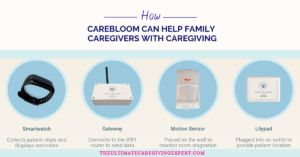What is tube feeding?
Some facts regarding tube feeding
- Maintaining tube feed cleanliness is critical to the health of our loved ones. The tube should be washed and cleaned regularly. This is necessary to wash off all the feed remnants in the box. Not being cleaned off properly can cause infection for the people we care about.
- Tube feeding is not inherently painful. The discomfort caused by the tube inside the body can become intolerable. Imagine having an alien body constantly present inside your body. How would you feel? In the long run, it could become frustrating and disheartening. Granulated tissues are gradually placed around the tube as the process continues. Because of this, you may experience excruciating discomfort whenever you flex your abdominal muscles. In addition to that, these granular tissues are pretty challenging to remove. And can make things more complicated while feeding the patient through the tube.
- What exactly does tube feeding imply? Enteral feeding is meant when people talk about being fed through a tube.
- Our loved ones who have a tube implanted can bathe regularly. However, carers need to use caution when washing their charges because water can cause illnesses if it enters the stomach.
How to Improve Your Tube Feeds
Suppose you’re looking to improve your tube feeds. In that case, it’s essential to consult with a healthcare professional, such as a registered dietitian or a doctor, who can provide personalized advice based on your needs. However, here are some general tips that may be helpful:
Maintain proper hygiene:
Ensure that the feeding tube site is clean and properly cared for to reduce the risk of infections. Follow the recommended cleaning procedures and change the dressing regularly as your healthcare professional advises.
Use the correct formula:
Different individuals have different nutritional requirements, so it’s crucial to use the appropriate formula your healthcare team prescribes. Various procedures, including standard, high-calorie, and specialized formulas for specific medical conditions, are available. Make sure you’re using the right recipe for your needs.
Adjust the feeding rate:
The rate at which the formula is delivered through the tube may need to be adjusted based on your tolerance and medical condition. Your healthcare professional can guide you on the appropriate feeding rate to minimize discomfort or complications.
Monitor for intolerance or complications:
Pay attention to any signs of intolerance or complications during and after feeding. These may include nausea, vomiting, diarrhea, abdominal pain, bloating, or excessive gas. Report any concerns to your healthcare team promptly.
Maintain proper hydration:
Adequate hydration is essential for overall health. If you’re solely receiving tube feeds, ensuring you’re getting enough fluids is vital. Your healthcare professional can advise you on the appropriate fluid intake, including water, additional juices, or hydration supplements.
Follow recommended feeding schedule:
Stick to the prescribed feeding schedule provided by your healthcare team. Consistency in timing and portion sizes can help optimize digestion and absorption of nutrients.
Consider supplemental feedings:
Depending on your nutritional needs, your healthcare professional may recommend supplemental feedings or additional nutritional support alongside tube feeding. This can help ensure you’re receiving adequate nutrients.
Regularly review and adjust the plan:
Nutritional needs may change over time due to various factors, such as illness, recovery, or weight changes. Regularly consult with your healthcare professional to review your tube feeding plan and make any necessary adjustments.
Remember, these tips are general; you must consult your healthcare professional for personalized guidance based on your situation. They can provide detailed instructions and support to help you optimize your tube feeds.
Feeding on boluses
If you are using bolus feeding, which involves administering more significant amounts of formula through the feeding tube at specific intervals, here are some tips to help improve the process:
Consult with your healthcare professional:
Discuss it with your healthcare team before starting bolus feeding. They can assess your suitability for this method and guide the appropriate volume and frequency of bolus feedings based on your specific needs.
Optimize positioning:
Position yourself upright or slightly reclined during bolus feeding to facilitate the passage of formula through the tube. Avoid lying flat, as it may increase the risk of reflux or aspiration.
Use the correct syringe and tube size:
Ensure you have the correct syringe size to accommodate the desired formula volume without excessive force. Also, use an appropriate tube size that allows for smooth flow and minimizes the risk of clogging.
Gradually increase the volume:
Start with smaller bolus volumes and gradually increase the amount over time, based on your tolerance and the guidance of your healthcare professional. This helps your body adjust to the increased volume and reduces the likelihood of discomfort or complications.
Administer at a controlled pace:
Slowly push the syringe plunger to administer the bolus feedings rather than forcing it rapidly. This allows for better control and reduces the risk of overwhelming the digestive system.
Allow time for digestion:
After each bolus feeding, give yourself enough time to digest the formula before the next feeding. Your healthcare professional can recommend an appropriate interval between feedings based on your needs.
Monitor for tolerance:
Pay attention to any signs of intolerance or discomfort during or after bolus feedings. Inform your healthcare team if you experience nausea, bloating, abdominal pain, or vomiting. They can adjust the volume or frequency of bolus feedings as needed.
Stay hydrated:
Bolus feedings may not provide sufficient hydration alone. Ensure you receive adequate fluids throughout the day, as your healthcare professional advises. They may recommend additional water or liquids to maintain proper hydration.
Regularly review and adjust the plan:
As your nutritional needs change, reviewing your bolus feeding plan with your healthcare team regularly is essential. They can monitor your progress, make necessary adjustments, and provide ongoing support.
Remember, bolus feeding requires careful monitoring and individualized adjustments. Work closely with your healthcare team to ensure that you are receiving optimal nutrition and to address any concerns or difficulties you may encounter during the process.
Combining methods of nutrition
Combining different nutrition methods can be beneficial in certain situations to meet specific nutritional needs. Here are some standard methods that can be connected:
Oral intake with supplements:
Suppose you can consume some food and fluids orally but have difficulty meeting all your nutritional requirements. In that case, your healthcare professional may recommend oral intake supplemented with oral dietary supplements. These supplements can provide additional calories, protein, vitamins, and minerals to support your nutritional needs.
Tube feeding with oral intake:
Sometimes, tube feeding may be necessary to provide complete or partial nutrition when oral intake alone is insufficient. However, if you can tolerate some oral intake, your healthcare professional may suggest combining tube feeding with oral information to provide a balanced nutrition plan. This approach allows you to continue enjoying the social and sensory aspects of eating while ensuring adequate nutrient intake through tube feeds.
Bolus feeding and continuous feeding:
Depending on your needs and tolerance, bolus feeding (administering more significant amounts of formula at specific intervals) and continuous feeding (a slow and constant formula drip) may be recommended. Bolus feeding can provide larger volumes of nutrition at once, while continuous feeding ensures a continual supply of nutrients throughout the day or night.
Parenteral nutrition with enteral nutrition:
Parenteral nutrition involves delivering nutrients directly into the bloodstream through an intravenous line. It is typically used when the digestive system cannot absorb nutrients effectively. Sometimes, a combination of parenteral and enteral nutrition (such as tube feeding) may provide a comprehensive approach to meeting your nutritional needs.
Tailored supplementation:
Your healthcare professional may recommend specific nutritional supplements alongside your primary nutrition method. These supplements can address specific deficiencies or support certain medical conditions. For example, omega-3 fatty acid supplements may be suggested for individuals with certain cardiac conditions.
Working closely with your healthcare professional, preferably a registered dietitian or a doctor, is crucial to determine the most appropriate combination of nutrition methods for your specific needs. They can evaluate your nutritional requirements, monitor your progress, and make adjustments as necessary to ensure you are receiving optimal nutrition.

The use of tube feeding is not the end of the world.
There is a widespread misconception that requiring a feeding tube spells “the end of the world.” On the other hand, this is not the case. You can do the function properly with the assistance of a feeding tube, even though you are living with specific organ impairments. Your entire life will be impacted as a result of this. However, you can still continue your regular activities without any problems. Let’s get familiar with how to go about our daily lives while using a feeding tube, shall we? Here is how it works:
- Alter your sleeping posture. You will not be able to continue sleeping in your chosen position. To accomplish this, we must instruct the people we care about to sleep on their backs or sides.
- Change your sleeping position. Even the simplest of tasks can become complicated. The tube may interfere with routine activities in some situations. On the other hand, we can assist our loved ones with their daily routines while they gradually acclimate to the tube.
- Traveling will be an adventure. Bring along an additional feeding bag whenever you go traveling. If you wish to fly, you must obtain permission from your attending physician.
- Bathing and swimming pools might be complex. So, for example, particular safety measures to observe while showering. Also, you should avoid using public collections to reduce the likelihood of contracting an infection.
Contact your primary care physician.
- The skin around the tube’s area has become rosy and feels warm.
- There is an abnormally large amount of drainage, and it stinks badly.
- There has been a modification to the color of the drainage, which is now a dark coffee tone.
- If there is also nausea and vomiting in addition to the temperature, get medical attention immediately.
- I was suddenly losing or gaining a significant amount of weight.
- Your loved one could end up with constipation or diarrhea due to this.
- A painful or bloated stomach that also feels constricted.
Caregiving Consulting
Caregiving can be challenging, frustrating, and highly stressful!
Most caregivers can’t afford the luxury of stepping away from their daily responsibilities. Taking time out to regroup does not exist in their world.
But it doesn’t have to be that way.
- Find peace in caregiving by tapping into resilience, joy, and radical forgiveness.
- Would you love to give care with expertise and confidence?
- Are you managing your loved one’s daily activities in an organized and structured way?
- You follow a proven caregiving system that provides for your loved one’s needs while giving you peace of mind.
I will tailor the sessions to your specific needs to:
- Explore strategies
- Determine your immediate needs by providing focus and clarity.
- Develop a wellness plan to boost your caregiving journey.
- Ensure that systems are incorporated into your caregiving journey through regular check-ins.
The Ultimate Caregiving Expert Consulting offers tools, services, and resources to give you a fresh, objective perspective on caregiving. This will help enhance your caregiving journey if you feel confined, overwhelmed, or hopeless in the role of caregiver.
Additional Education
Education in caregiving refers to acquiring the knowledge, skills, and understanding necessary to provide care for individuals who require assistance with activities of daily living, such as bathing, dressing, eating, and grooming.
This education can be obtained through formal programs or on-the-job training and experience.
Education in caregiving aims to equip individuals with the skills and knowledge necessary to provide high-quality, compassionate care for those in need.
Caregiving can be challenging, frustrating, and highly stressful!
But . . . it doesn’t have to be that way.
Imagine . . .
- Giving care with expertise and confidence
- Managing your loved one’s daily activities in an organized and structured way
- You follow a proven caregiving system that provides for your loved one’s needs while giving you peace of mind.
If the above sounds like what you need and have been searching for desperately . . . Then you need to enroll in The Ultimate Secrets to Caregiving with LESS Stress and MORE peace course!
Conclusion:
Tube Feeding is not the end of the world but a new normal. By following the above tips and suggestions, you will be fine. If at any time, do not hesitate to call your doctor’s office for advice. Attending to your loved one with tube feeding can be challenging, but it’s not impossible. With the proper knowledge, you can do this. Remember to care for yourself and keep your business going while caregiving. I’m here to assist you on this journey. Schedule your planning session with me to see how to keep your life and business running smoothly. Also, here is an article about how food can boost and benefit many illnesses. Finally, check out this article about feeding your loved ones.






